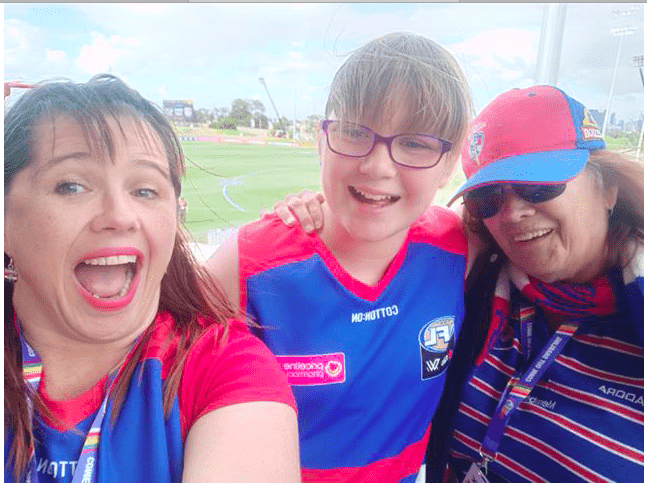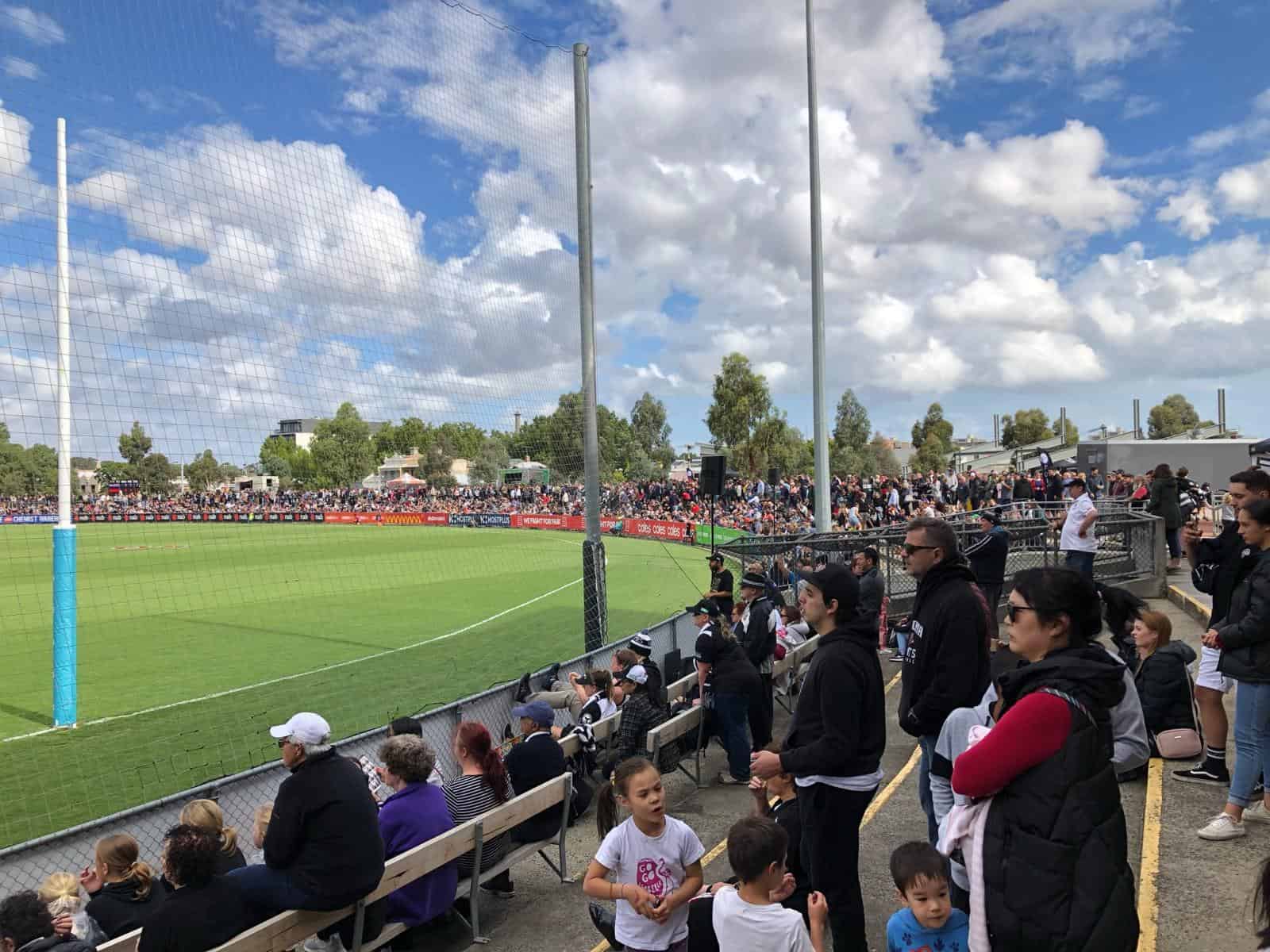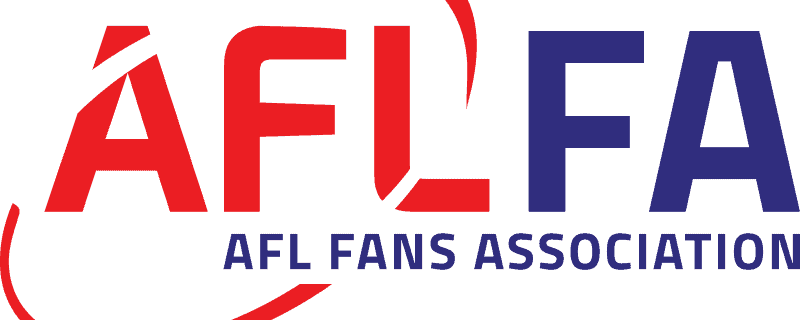 The advent of the third season of the AFLW has precipitated the usual debates about ‘quality’ and ‘standard’ of footy. The increase in number of teams – with Geelong and North Melbourne joining – has seen a broadening of the pool of players. Some come from basketball, netball and association football backgrounds. The players’ jumpers have had their designs improved and are distinct from those of their male counterparts.The euphoria of the first season has passed and a steady fan base is building.
The advent of the third season of the AFLW has precipitated the usual debates about ‘quality’ and ‘standard’ of footy. The increase in number of teams – with Geelong and North Melbourne joining – has seen a broadening of the pool of players. Some come from basketball, netball and association football backgrounds. The players’ jumpers have had their designs improved and are distinct from those of their male counterparts.The euphoria of the first season has passed and a steady fan base is building.
The opening weekend of AFLW provided fodder for those who both support and reject the AFLW. The Adelaide-Bulldogs and the Geelong-Collingwood games were low scoring: proof enough for the nay-sayers that the players were lacking skill. For the enthusiasts of the AFLW, there were higher than expected attendances at the aforementioned games. The second week provided a more convincing weekend for the advocates, against a backdrop of social media negativity. The AFL and Channel 7 weren't quite in agreement about how best to go about confronting this discontent.
One of the less highlighted virtues of the AFLW is the prominence it gives to the old and neglected stadia such as Norwood’s “The Parade”, Carlton’s “Princes Park” and North Hobart Oval in Tasmania. These stadia are part of the rich fabric of footy’s cultural heritage and watching games there (either on television or first hand) is a reminder of the game’s tradition. These stadia need to be maintained, protected and used in order to balance the proliferation of generic and multipurpose stadia such as Docklands and Perth Stadium.
In this brief article we speak with a few footy fans who are supportive of women's footy, yet, also realise there are some things still lacking. Like conversations about men's footy, there is much to agree on and disagree on. Passionate conversations, imbued with conviction, are the norm. The mere introduction of 'AFLW' hasn't facilitated a general state of gendered equality. Instead it has fostered further debates about the role footy and sports play in our lives and how we enjoy them.
**
 Ness Gemmell (pictured left with Jess and Jude) has followed and been a contributor to women's footy since well before the AFL got on board with the founding of the AFLW. Ness is a committed Doggies fan and loves the AFLW for the atmosphere and quality of games.
Ness Gemmell (pictured left with Jess and Jude) has followed and been a contributor to women's footy since well before the AFL got on board with the founding of the AFLW. Ness is a committed Doggies fan and loves the AFLW for the atmosphere and quality of games.
“I first got involved in women’s footy in 2001 when my girlfriend was playing for the Darebin Falcons. I volunteered as the trainer on game days; looking after the players. Things were much different back then. The team played a lot on muddy and wind-swept grounds. Over time, and particularly over the last few years, the team has been playing on better ovals. Of course, this plays a role in developing the players’ skill and their enjoyment too.”
“I’m a Bulldogs fan, so, when the AFLW started to be discussed and emerge with those initial exhibition games against the Demons, of course I was on board. There is so much to enjoy about the games. I love the atmosphere at the Whitten Oval. The Club does a lot to provide a variety of different foods and other things which help to make it a more cultural experience. They’re doing their best to attract new crowds who may not be so familiar with footy. As a Bulldog fan, there’s been a lot to be positive about. The 2016 Mens Premiership has provided fans like myself with great memories. And on top of this, we won the 2018 AFLW Premiership.”
“I think it is important that the AFL start charging a fee for AFLW games. This is a ‘product’ that is worth watching. This is no longer a gimmick. It seems so strange that there is a cost for AFLX, but, somehow the AFL doesn’t truly value the AFLW and so it is made available free of charge. Somehow I think this belittles the quality of play and the sacrifices and professionalism of the AFLW players.”
**
Joel Hardy, a former amateur footy player who has played Australian Rules in the States is less than impressed with the rush to semi-professionalisation of the women’s league. Living in Karratha in northern Western Australia he hasn’t been able to get to any of the women’s games, but he watches the games on the TV. He’s a Swan Districts in the WAFL and Collingwood fan in the AFL and is optimistic that some time down the track, when proper investment is made in the women’s league, the AFLW will be of a better standard.
“These women [in the AFLW] go hard at the ball. And that’s great. But many of the players lack the skills and the fitness and so they end up being ridiculed. The scores are too low. I’ve got a young daughter myself and if she wants to play one day that would be great. But, right now, the AFLW is not where it needs to be. The AFL call it a professional league, but, it is a very short season. It's semi-professional at best. The women have not been given the adequate time and resources to succeed. The endeavour is there; but not enough of the players have had enough training to really develop their skills. Someone like Erin Phillips is an example of someone who has been a long-term sports-professional and it shows in her skills and fitness. She’s got that strong foundation that some of the other players don’t have. If the AFL wants the AFLW to succeed they’ve got to invest more so that it is a fully professional league.”
**
Suzanne Considine is a long-term Melbourne fan. She quickly got behind the Melbourne women’s team in their early stages of formation. Suzanne is a Cheer Squad co-ordinator for the men’s team and has used her network to also establish a consistent and strong cheer squad for the Melbourne women’s team.
“I have been following the Melbourne women’s team since its inception. So, that is before the first season of AFLW. I went to all of the exhibition matches and have been to all of the Melbourne games in Melbourne. I have been to the away game in Darwin and Blacktown (western Sydney), but some of the others I haven’t been able to make it to.”
“The AFL has done a good thing by initiating the league. It has forced people to take a position, and as such it has brought out some closet sexists. The atmosphere at the games is totally different from the men’s games. There is a carnivalesque atmosphere. There are lots of children and they are able to play about on the grass. I love going to the smaller grounds which are no longer used in during the AFL men’s season. There is also less tension between fans. When there is a good piece of skill, we just applaud, no matter the colours the player is wearing.”
“Scoring is not the be all and end all of a game. High scoring doesn’t indicate quality. For me, the two most memorable Grand Finals over the last fifteen years have been the Sydney-West Coast grand finals, particularly in 2005, which Sydney won 58 to 54 is a case in point. Low scoring games can have an equal amount of tension just as higher scoring games can.”
“The AFL can improve the integrity of the competition through giving a greater spotlight to the AFLW Grand Final. This year, the Preliminary Finals of the AFLW will be held during Round 1 of the AFL Men’s and the Grand Final during Round 2. These games should be attracting the greatest amount of media attention, but, instead, they’ll be swamped by the attention that is always given to any of the men’s games.
**
 To belittle the value of the women’s game for reasons of skill and quality, which come from our selected viewing (and memories) of the men’s game – which has been professionalised to within-an-inch of its life, is to misread the trajectory of the men’s game and to perpetuate a narrow interpretation of the value of footy specifically and sport more generally.
To belittle the value of the women’s game for reasons of skill and quality, which come from our selected viewing (and memories) of the men’s game – which has been professionalised to within-an-inch of its life, is to misread the trajectory of the men’s game and to perpetuate a narrow interpretation of the value of footy specifically and sport more generally.
Women’s footy is not a poor imitation of the men’s game. It has its own distinct set of rhythms, patterns, tactics and trajectory. Like any game or sport worth its salt, Australian rules football has a set of basic qualities and rules which are then endlessly re-created with variation after variation after variation. That is what keeps us coming back for more: whether it is the elite men’s game, the elite women’s game, or those games which feature our friends, children or our local suburban club.
*Written by Andy Fuller, AFLFA. With thanks to: Ness Gemmell, Suzanne Considine and Joel Hardy. Photo of 'Demon Army' courtesy of Suzanne Considine. Photo of the crowd at Victoria Park thanks to Cheryl Critchley.

